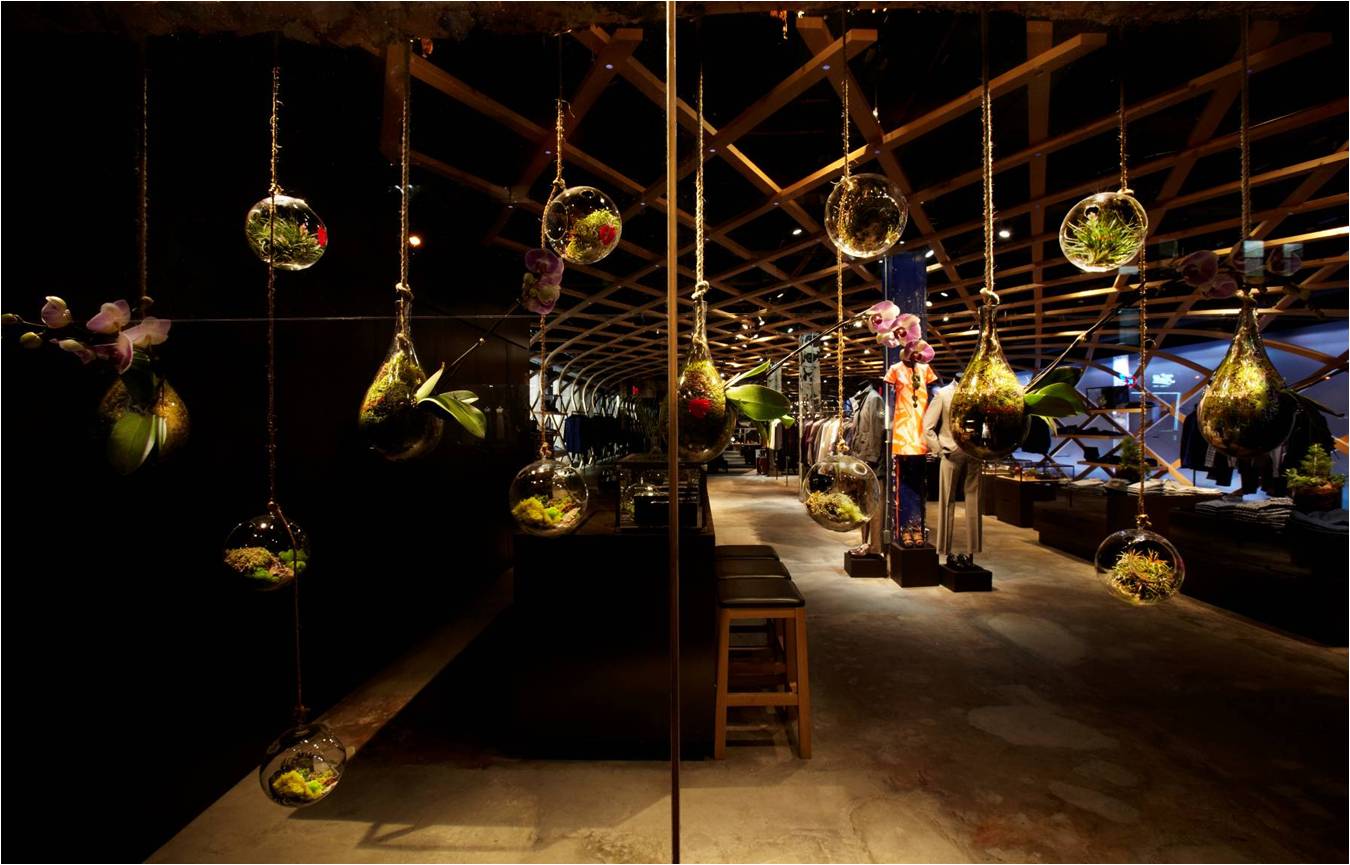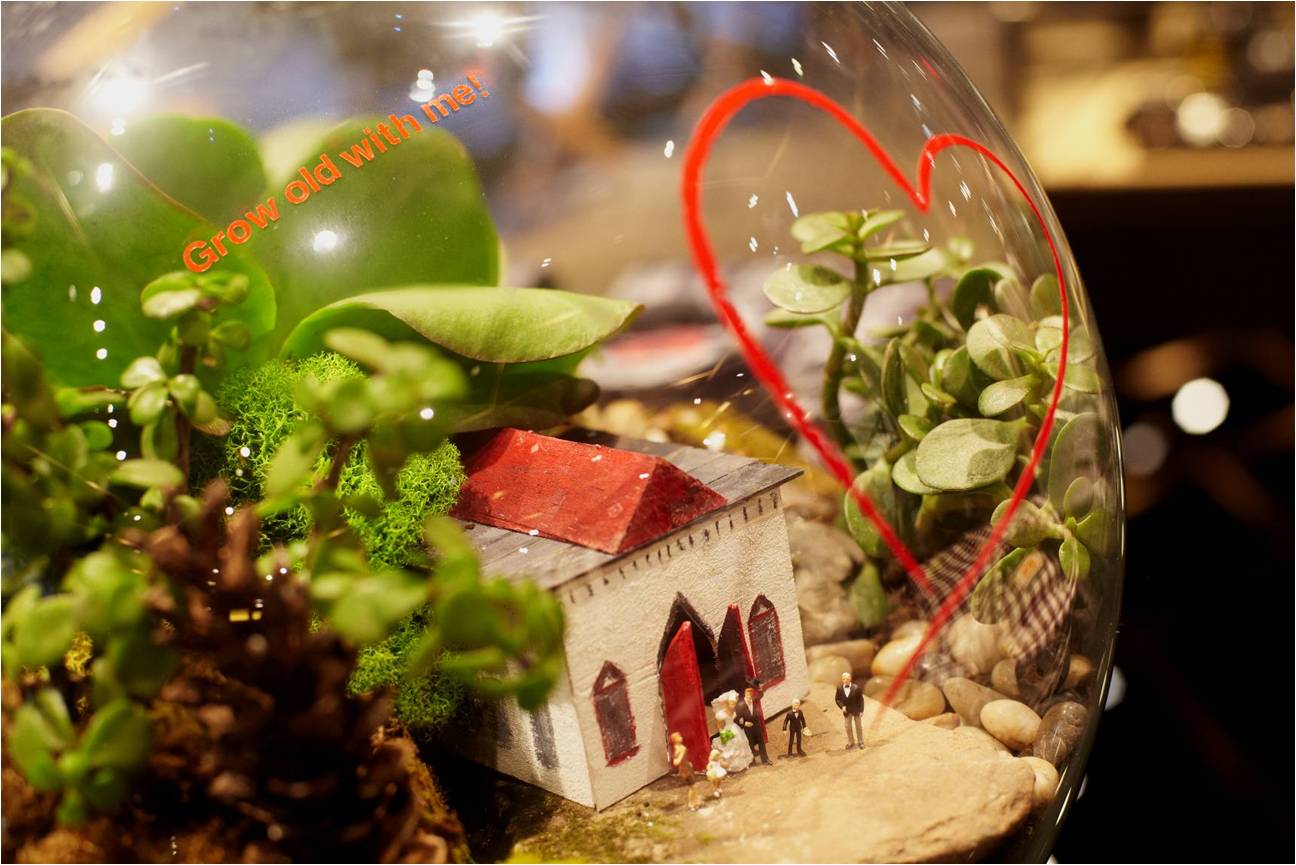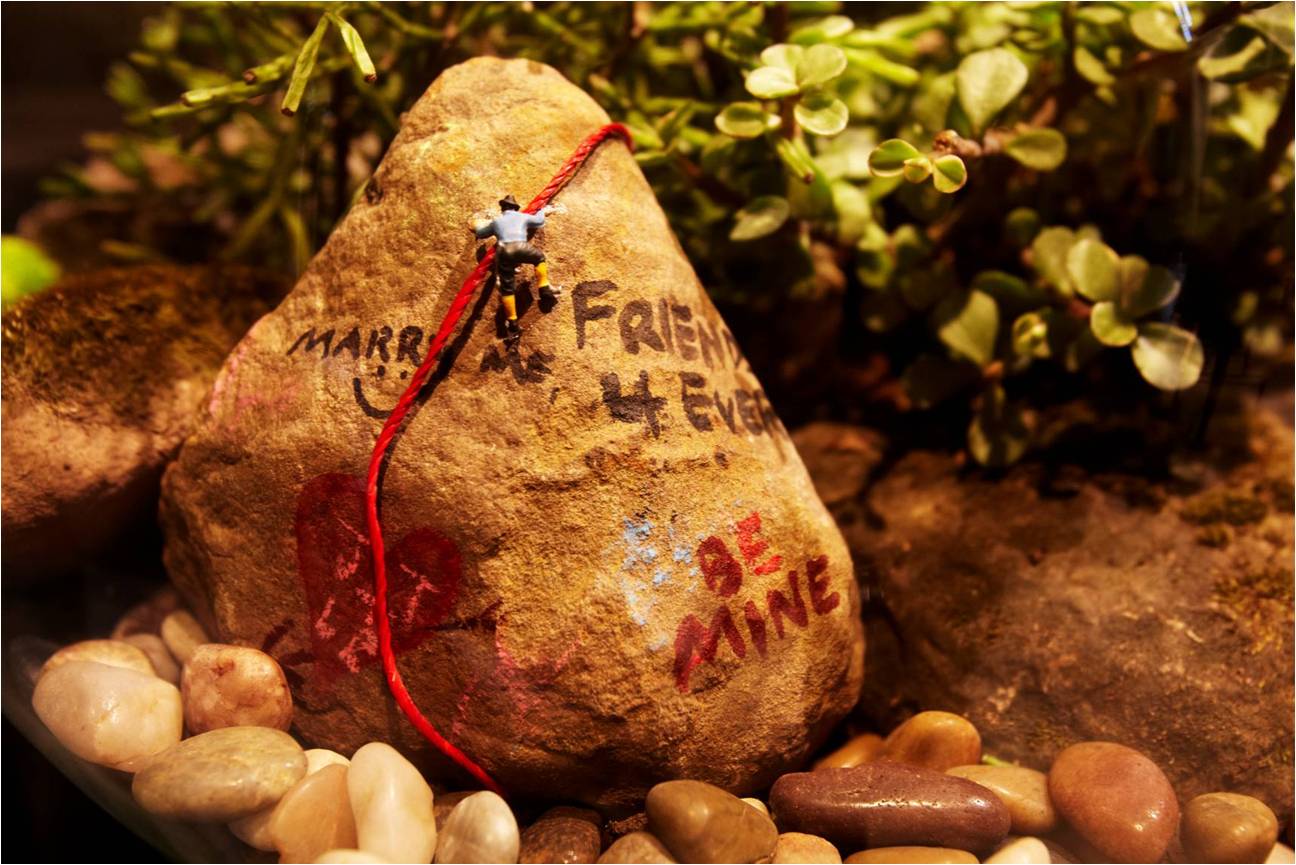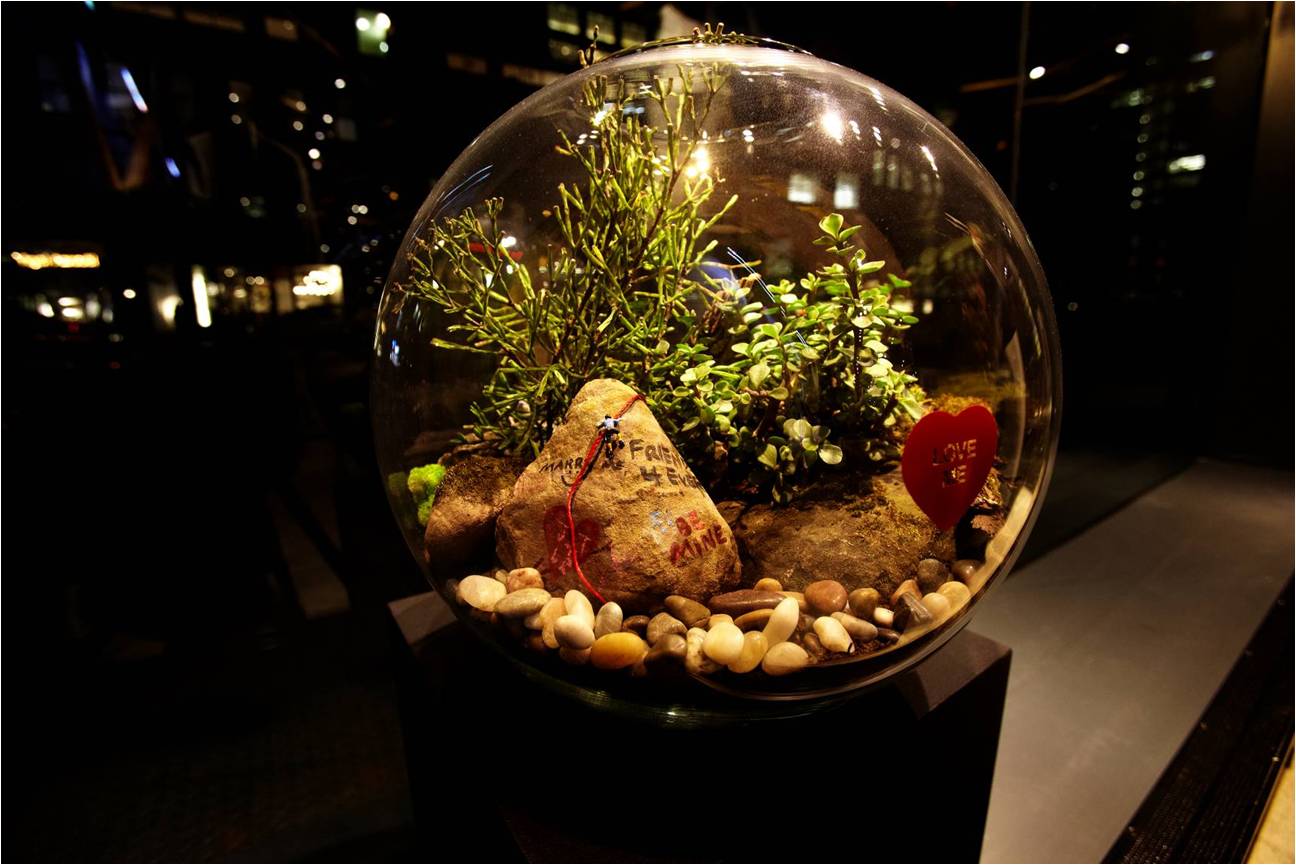Terrariums
“LOVE ON THE ROCKS” – The Hugo Boss Project
In January-February 2012, I had the pleasure of collaborating with Brooklyn-based artist and international curator, Lisa Chamberlin, to co-design a Valentine’s Day window and store presentation for the iconic fashion courtier, Hugo Boss, located in the heart of New York City’s Meat Packing District.
Our challenge was to create an art installation work that would incorporate plant life and botanical elements in a unique and meaningful way…something that would both promote store visibility and enhance brand, while also promoting environment and sustainable practice initiatives. The result was a series of globe-shaped open-terrariums teamed with several glass vessels of varying shapes and sizes, suspended from the 15 foot ceilings by hemp rope attached to a Clump Birch tree trunk – all materials found within nature. Every glass vessel revealed some form of plant life and botanicals such as moss, lichens and rocks indigenous to the region…occasionally staged with tiny 1/16” scale model “human figures” who were on view through the “looking glass,” performing a host of activities, including cozy couples on park benches, bicycling, hiking, and rock climbing, as well as a bride and groom with the entire wedding party en tow - all this within the greater context and backdrop of the living and breathing worlds of the terrariums that dominate each scene or diorama. This project proved to be a big success, and my terrariums have since appeared in a vast number of corporate offices and public venues throughout New York City, including MACY’S flagship department store at 34th Street/Herald Square. The terrariums would even make a guest appearance alongside my landscape paintings in a solo exhibition staged at the Marleau Gallery in upstate New York.
Why Terrariums and Plants?
For many years, I have embraced the work of Edward O. Wilson and his research in the field of “Biophillia,” a term originally attributed to the sociologist Eric Fromm, literally meaning “Love of life or living systems.” Wilson’s work postulates that humans have a deep and subconscious connection with nature and environment, and that the attractions and positive feelings that people have toward certain habitats, activities and objects in nature must be reinforced in our daily lives by bringing the outdoors indoors, such as the home or workplace. As we continue to grow, industrialize, populate (and pollute) our planet, we find ourselves “controlling” and “taking back” nature, rather than peacefully and respectfully coexisting with it. My interests in terrarium art and interior plant design owes much to Wilson’s work, and my belief that since the industrial revolution of the nineteenth and twentieth centuries, and certainly now as we enter a new and rather ominous phase in human development, recently termed by anthropologists as the Anthropocene Period, we (humans) have become far too dependent upon industry, commerce and technology, while far too removed and disconnected to our natural surroundings and environment. I believe the introduction of plant life in the interior space is essential to a healthy mind-body-spirit relationship, and helps us to find order out of chaos, and to keep us sane in an insane world.
Whether the terrarium is worthy of being considered as a work of fine art in the same way that a painting or sculpture would be, is a question best left for the viewer to decide. The terrarium speaks to many things I care about, and on many levels. They remind us all at once of nature’s beauty, majesty, vulnerability and fragility. However, more than anything else, they are fun to look at and care for, and they make us happy.
Roy Owsley




